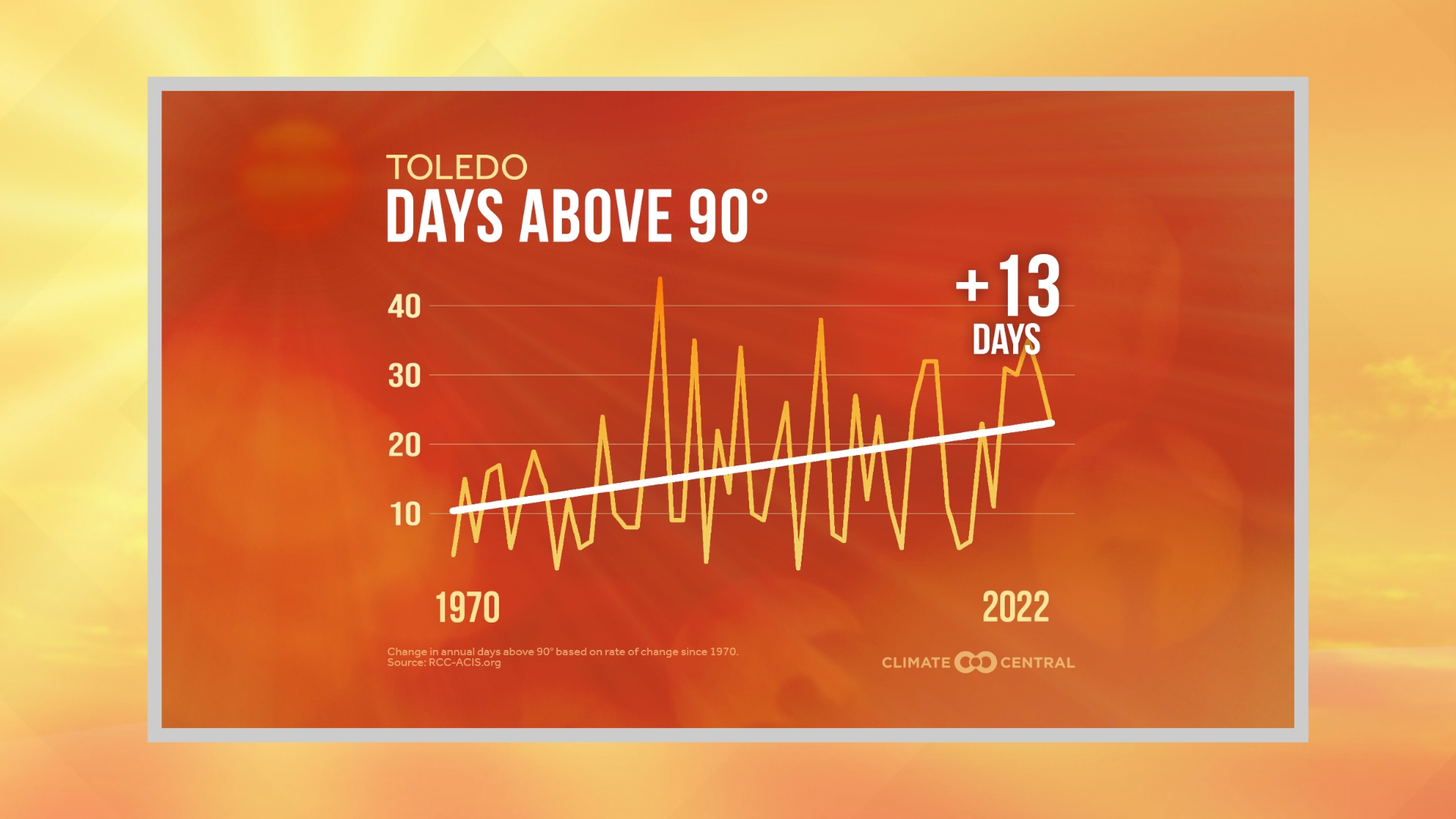TOLEDO, Ohio — Late summer heat impacted much of the nation this week, dosing out the hottest temperatures since June for northwest Ohio and southeast Michigan. Over 70 million Americans experienced heat alerts this week ranging from Heat Advisories to Excessive Heat Warnings.
With September right around the corner, you may be wondering if the summertime heat will continue into the new month. In this week's Climate Friday Newsletter, Meteorologist John Burchfield will recap this week's heat and look ahead to September.
Sunday kicked off a stretch of several consecutive 90 degree days as the Mercury climbed to 91. Falling just shy of the record high of 95, Sunday brought unseasonably warm temperatures to much of the region. Heat increased Monday as thermometers reached 92 degrees, still below the record of 97 degrees. On Tuesday, temperatures soared to 95 degrees, the second hottest day of the summer season.
While Tuesday's temperatures fell short of the record, they reminded Midwesterners that summer isn't over yet. The hottest day of summer was June 17, which boasted an impressive temperature of 99 degrees, Tuesday, August 27 shares the second spot with June 20 at 95 degrees.

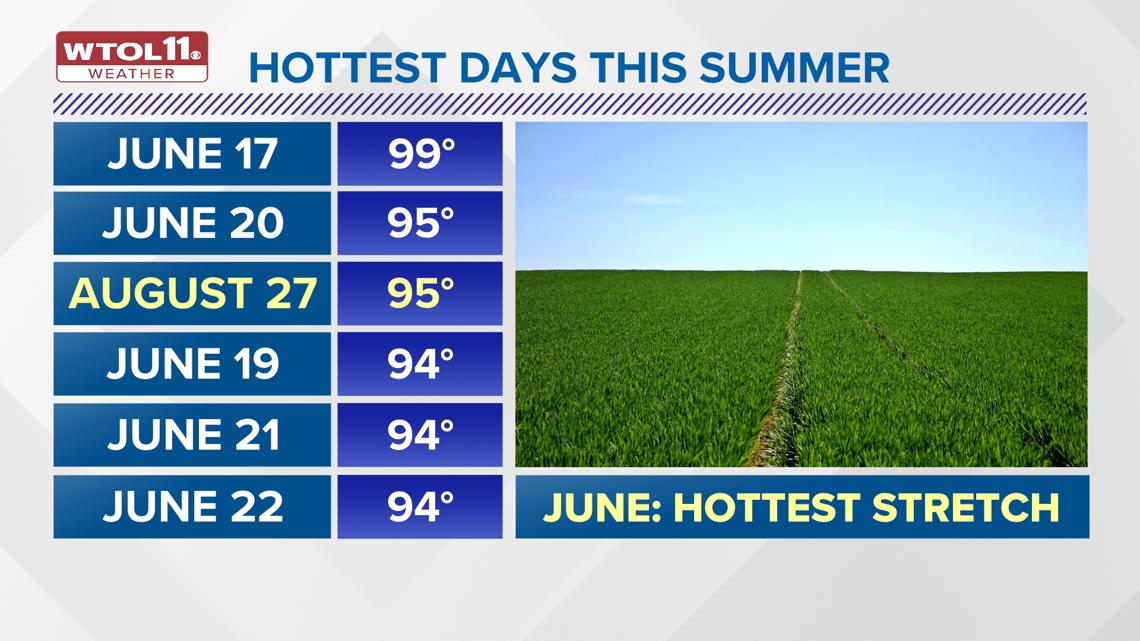
On three occasions, temperatures reached 94 degrees- June 19, June 21, and June 22. This week brought our first 90 degree days of the month after a relatively cool start to August. The tally of 90 degree days this season now sits at 15, still shy of the normal annual total of 19.
How has the heat been distributed among summer months? May kicked off the warm weather season with a pair of 90 degree days. June dosed out the hottest week of the summer with a whopping 8 90 degree days. July brought relatively cool weather with only two 90 degree days. August featured a trio of 90s, all of which occurred this week.

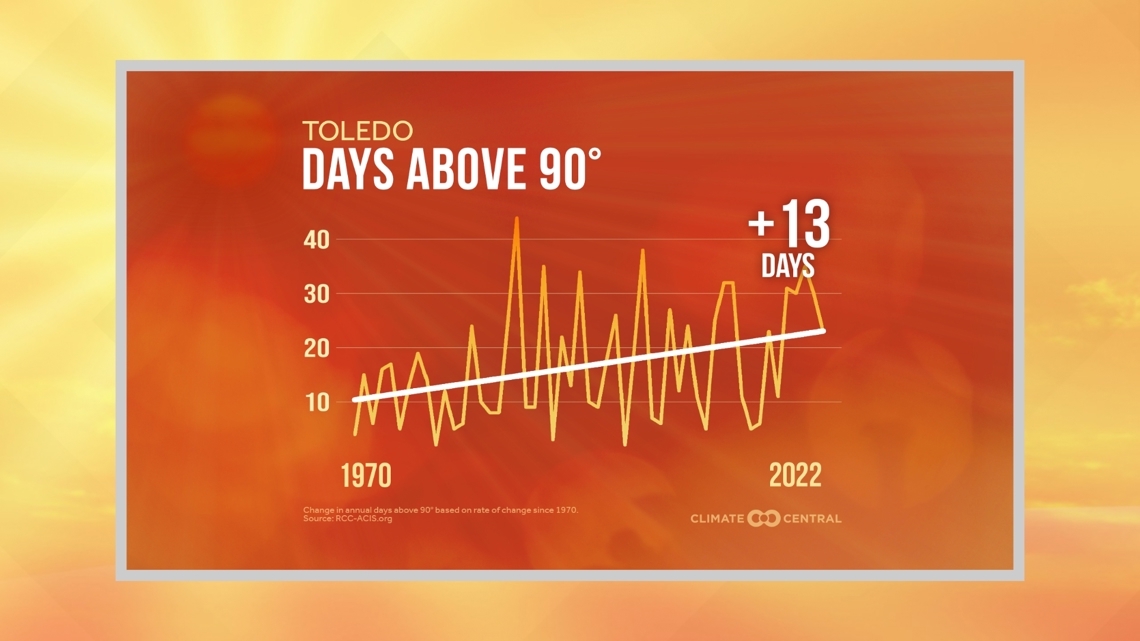
This year has already surpassed 2023 in terms of 90 degree days; last year produced only 11 days over the 90 degree mark. Today will likely add to our 90 degree count with forecast highs in the low to mid-90s. Though this week has dosed out some sweltering late season heat, a big change in the weather pattern is on tap for the holiday weekend.
Humidity levels will drop substantially by Sunday as temperatures fall to the 70s for Labor Day. The first week of September promises a break from the heat and humidity and temperatures will likely remain below-average through the middle of the month. Stay tuned to the WTOL 11 weather team for the latest forecast.

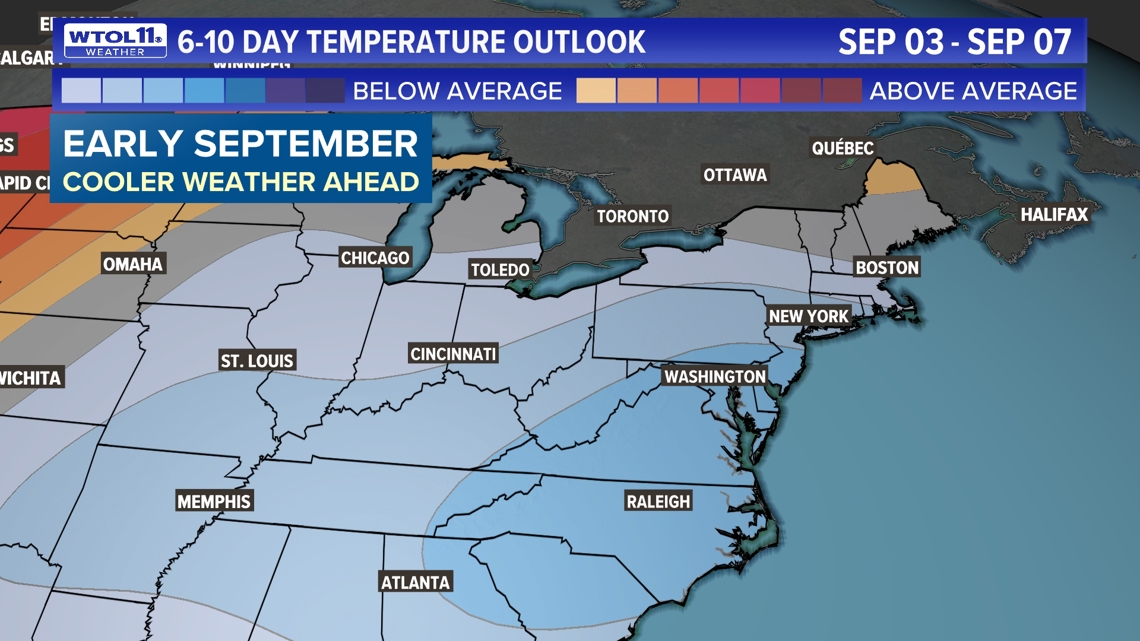
How has heat impacted the nation and globe this week? In the past 7 days alone, almost 650 record temperatures have been set across the United States, and in the past month, over 6,000 record highs and lows have been recorded nationwide.
On a global level. August is poised to be one of the hottest if not the hottest on record since modern weather records began. After 13 consecutive record-breaking months globally, July finally ended the streak. Checking in as only the 2nd hottest on record, July, 2024 fell less than half a degree behind July, 2023. This still means that 13 of the past 14 months globally have gone down in the record books as the hottest on record, a trend that is growing more common with climate change.
RELATED: How are drought conditions impacting agriculture in northwest Ohio? | WTOL 11 Weather Impact
On the other side of the equator, extreme heat has impacted not the summer, but the winter this week. In Australia, triple-digit temperatures shattered winter records early this week. According to the Bureau of Meteorology, temperatures surged near 107 degrees near Yampi Sound, located in the remote northwestern portions of the country.

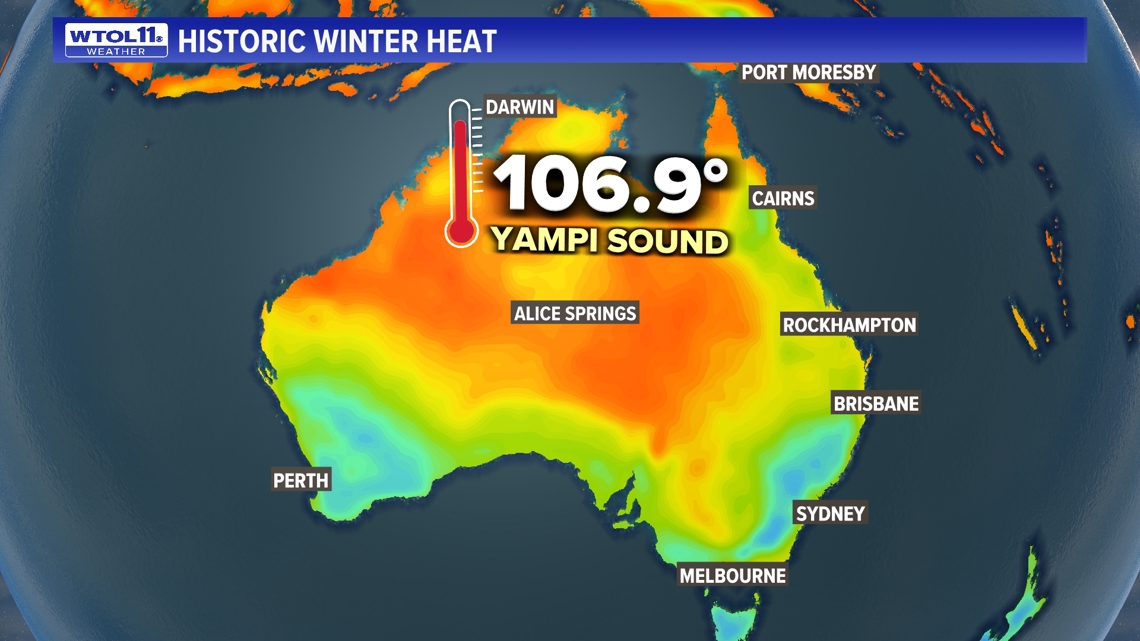
Hot temperatures have also impacted more metropolitan areas like Sydney, which has experienced elevated fire danger with hot and windy weather. Extreme heat is not often associated with wintertime, but in the southern hemisphere, hot weather has impacted the cool season for much of Australia. Global heat has been the big weather story this week, a trend that is associated with climate change.
After a very hot final week of August, cooler conditions and lower humidity will return for the holiday weekend and beyond. September will likely bring a big shift in the weather pattern that will usher in many days in the 70s. Stay tuned to the WTOL 11 Weather Team for the latest 10-day forecast.
WATCH PREVIOUS EPISODES OF CLIMATE FRIDAY

